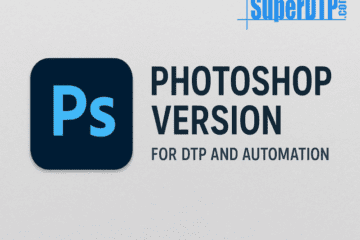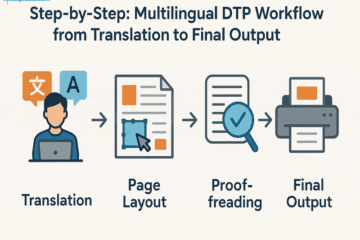In today’s interconnected world, businesses must find ways to connect with audiences from different backgrounds. One of the most powerful tools for conveying information is infographics. These visually appealing and easily digestible graphics combine text, images, and data to tell a story. However, when infographics are created for different markets, it’s essential to localize them properly to ensure they resonate with local audiences. In this blog, we’ll explore the best practices for localizing infographics in Multilingual DTP Services projects.
Understanding the Importance of Localization
Localization is the process of adapting content to fit the cultural, linguistic, and functional aspects of a target market. For DTP projects, this goes beyond just translating the text; it involves adjusting every aspect of the design to make sure it aligns with the expectations and preferences of the new audience. Infographics, which are often used to simplify complex information, require careful attention when localizing. A small error or oversight in the design can make the graphic confusing or even offensive to the audience.
Key Considerations for Localizing Infographics
When localizing infographics for different languages and cultures, the first thing to consider is the language itself. Each language has unique characteristics that can impact the overall design. For example, languages like Arabic and Hebrew are written from right to left, while others, like English and most European languages, are read left to right. This directional difference may require you to flip the layout, reposition text and elements, and ensure that the design works well in both directions.
Moreover, text length can vary greatly between languages. Some languages may require more space for the same information, while others may use fewer words. It’s important to make sure that your infographics remain clear and visually balanced despite these changes. For instance, text-heavy infographics might need to be restructured for languages that tend to be more concise or vice versa. This ensures that your message is communicated effectively without overwhelming the viewer or leaving them confused.
Cultural Sensitivity in Design Elements
Cultural differences are another crucial factor when localizing infographics. Colors, symbols, and even images can have different meanings depending on the culture. For example, while the color white often represents purity in Western cultures, it can signify mourning in some Asian cultures. Similarly, certain symbols that are widely accepted in one country might be misunderstood or even considered offensive in another. Therefore, it’s essential to research the cultural norms of the target market to ensure that the design elements of your infographic are appropriate and well-received.
Another consideration is the imagery used in infographics. Images of people, products, or cultural references should be chosen with care to ensure they reflect the target market’s diversity and values. For example, if your infographic features people, make sure to use models who represent the local demographic. In some regions, the portrayal of certain groups may not be accepted, so it’s vital to select images that reflect the diversity of the audience you’re addressing.
Fonts and Typography Choices
Fonts and typography play a significant role in infographics. Some fonts may not be legible in other languages, especially if the text is in a different script. Therefore, you must choose fonts that support the characters and diacritical marks of the target language. For example, a font that works well for English may not display characters properly in languages like Chinese, Japanese, or Arabic. It’s essential to select fonts that are versatile and accessible in different languages to ensure readability and design consistency.
Additionally, the size and style of the text should be adjusted according to the language. Certain characters in different languages may require larger font sizes for clarity. Pay attention to line spacing and the overall layout to ensure the infographic remains visually appealing after localization.
Data Representation and Measurements
Another aspect to consider when localizing infographics is how data is presented. Different regions may use different measurement systems, currencies, or date formats. For example, while the United States uses the Imperial system (inches, feet, pounds), most other countries use the Metric system (centimeters, meters, kilograms). When localizing infographics that contain data, make sure to convert measurements and formats according to the standards of the target region. This ensures that your infographic is both accurate and relatable to the local audience.
Similarly, currency symbols and date formats can vary. If your infographic includes pricing or dates, adjust these elements to fit the local norms. The date format in the United States is typically written as month/day/year, while many European countries use day/month/year Currency symbols also vary, so make sure to update them as needed.
Finalizing the Layout and Testing
Once the language, cultural, and design adjustments have been made, it’s time to finalize the infographic. Before finalizing the design, test the infographic with a small group of local users to gather feedback. This testing can help identify any unclear sections, cultural misunderstandings, or visual imbalances. Based on the feedback, you may need to make further revisions.
Finally, ensure that your localized infographic is optimized for the platform it will be displayed on. Whether it’s for a website, social media, or print, the design should be adapted to fit the requirements of the platform. For instance, a graphic for a website might need to be more interactive, while a print version might require higher resolution.
Conclusion
Localizing infographics in DTP projects is more than just translating text; it’s about adapting the entire design to fit the cultural and linguistic needs of a target audience. By considering language, cultural elements, fonts, data representation, and layout, you can create infographics that are both visually appealing and effective in communicating your message. With the right approach, you can ensure that your infographics connect with a global audience and drive meaningful engagement.
Super DTP Ltd is a specialized desktop publishing agency located in Gabrovo Bulgaria, offering book publishing, multilingual DTP, and E-learning localization services to translation agencies and localization companies worldwide! Check our services at www.superdtp.com or contact us at dtp.bulgaria@gmail.com for further details.


